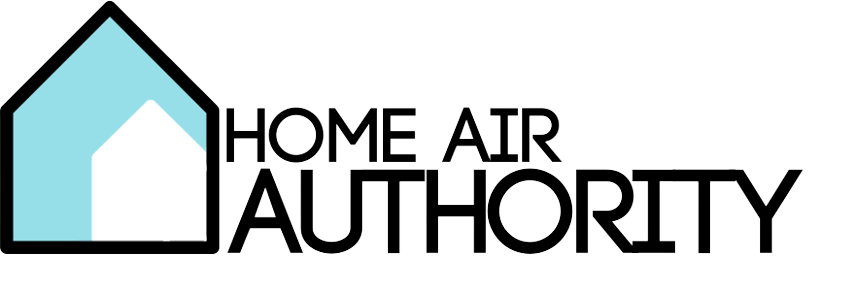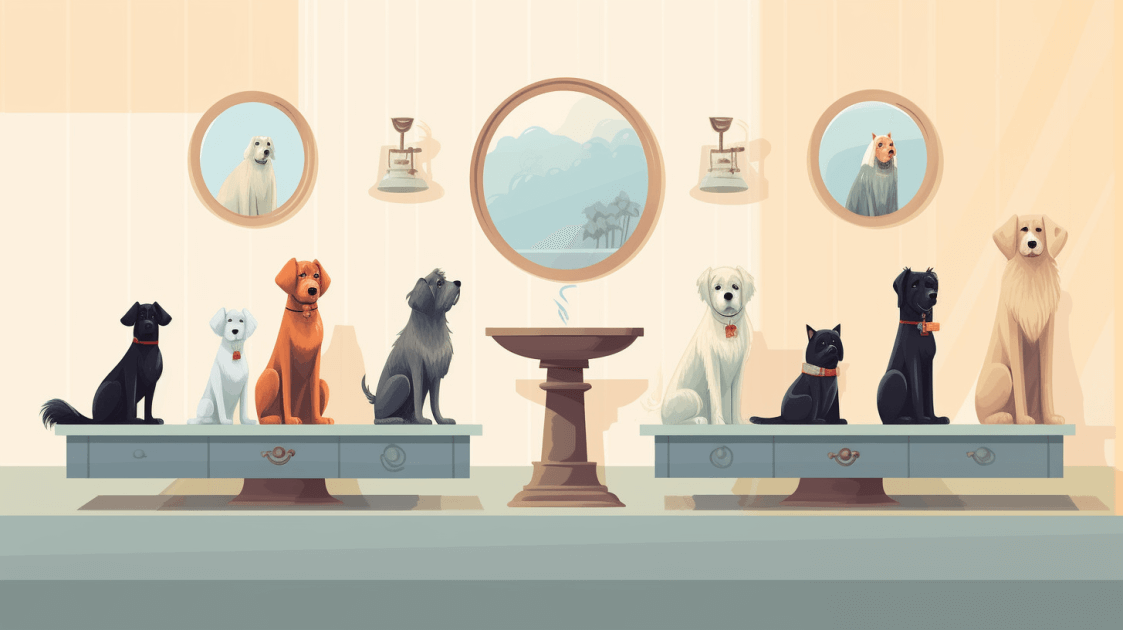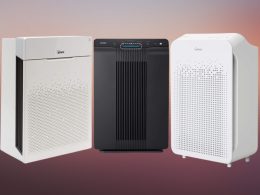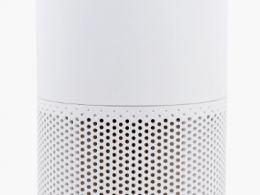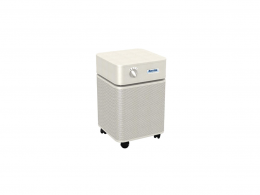Welcome to our in-depth exploration of the cleanest dogs and how to maintain their cleanliness. If you’ve ever owned a dog, you’ll know that keeping them clean is an important part of their overall care. It’s not just about keeping your home free from mess, but it also significantly impacts your pet’s health and well-being.
However, not all dogs are created equal when it comes to cleanliness. Certain breeds are naturally more prone to cleanliness than others due to their genetics, size, and habits. In this blog post, we’ll dive deep into the world of the cleanest dogs, offering you a comprehensive guide on which breeds top the list, the benefits of having a clean dog, and how to keep your pet in the best shape possible.
Whether you’re a prospective dog owner trying to choose the right breed, or an existing owner looking to improve your dog’s cleanliness, this blog will provide you with valuable insights and practical tips. Stay tuned as we embark on this exciting journey to understand more about our four-legged friends and their cleanliness habits.
Understanding Dog Cleanliness
Cleanliness in dogs is not a one-size-fits-all concept. It’s a combination of various factors that come together to make a dog “clean.” Some of these factors depend on the breed of the dog, while others are influenced by its size, lifestyle, and the care it receives from its owner.
Firstly, let’s look at the dog’s breed. Some breeds have naturally low-shedding coats, which makes them cleaner by default. These breeds, such as Poodles and Bichon Frises, do not shed fur all over your home, making them less likely to spread dirt and dander.
Size also matters when we talk about a dog’s cleanliness. Smaller breeds are generally easier to bathe and groom, resulting in them being kept cleaner. However, they might have a higher tendency to get dirty due to closer contact with the ground during their walks or play sessions.
The habits of the dog play a crucial role too. Dogs that are active and spend a lot of time outdoors may get dirtier quicker due to increased exposure to mud, dust, and other outdoor elements. On the other hand, indoor dogs or less active breeds may remain cleaner for longer periods.
In essence, understanding the cleanliness of dogs involves considering their genetic predispositions, physical characteristics, lifestyle, and the care they receive. In the next section, we’ll delve into why maintaining a dog’s cleanliness is important for both the dog and its owner.
Benefits of Having a Clean Dog
Maintaining your dog’s cleanliness is not merely for aesthetics; it plays a crucial role in ensuring their overall health and happiness. The benefits of a clean dog extend beyond your furry friend to you, your family, and your living environment. Let’s explore these benefits in more detail.
Health Benefits
Regular grooming and cleanliness practices can help prevent skin conditions, bacterial and yeast infections, matting, and other health issues in dogs. It’s also an excellent opportunity for owners to check for abnormalities like lumps, ticks, or fleas. Additionally, oral hygiene is crucial to prevent diseases such as periodontal disease, which can impact a dog’s overall health.
Comfort
A clean dog is a comfortable dog. Imagine wearing the same clothes for weeks on end – not very comfortable, right? Dogs, especially those with long hair, can experience discomfort from dirt, ticks, fleas, or matted fur. Regular grooming ensures your pet is always feeling their best.
Bonding Time
Bathing, brushing, and grooming your dog isn’t just about keeping them clean; it’s also an opportunity for bonding. Dogs generally enjoy being brushed, and it can be a relaxing activity for both of you.
Home Cleanliness
A clean dog also contributes to a cleaner home. Regular grooming reduces shedding, resulting in less dog hair on your floors, furniture, and clothing. Plus, less doggy odor is always a bonus!
Appearance
Let’s face it, a clean dog is a good-looking dog. Regular grooming keeps your dog’s coat shiny, smooth, and free from matting, enhancing their adorable appearance.
In the next section, we’ll shift our focus to specific breeds and discuss some of the cleanest dog breeds out there. Whether you’re looking for a low-shedding breed, one that doesn’t drool, or just a dog that naturally tends to be cleaner, we’ve got you covered.
Top 15 Cleanest Dog Breeds

There’s a wide variety of dog breeds, each with its unique traits and characteristics. While all dogs need regular grooming and cleanliness care, some breeds naturally tend to be cleaner due to factors like minimal shedding, self-grooming habits, or less drooling. Here are the top 15 cleanest dog breeds and the reasons why they’re on this list:
Bichon Frise
Bichons have a fluffy, non-shedding coat that requires regular grooming. They rarely have a strong doggy odor and are generally cheerful, making grooming sessions enjoyable.
Poodle
Regardless of their size, Poodles are known for their low-shedding, curly fur. They’re intelligent and easy to train, and their active nature doesn’t mean more mess, thanks to their unique coats.
Shih Tzu
These dogs are indoor pets and are less likely to get dirty outdoors. They have long, silky coats that shed minimally, and they drool less than other breeds.
Basenji
Known as the “barkless dog,” Basenjis are also popular for their clean habits. They groom themselves, don’t have a strong doggy smell, and their short hair doesn’t shed much.
Japanese Chin
Japanese Chins have cat-like self-grooming habits. Their coats shed minimally, and they’re less likely to have a strong doggy odor.
Maltese
Maltese dogs have a beautiful, long coat that doesn’t shed much. They love being indoors and are less likely to pick up outdoor dirt.
Yorkshire Terrier
Yorkies don’t have the typical fur that most dogs have but instead possess hair that is similar to human hair. They shed minimally and are less likely to spread pet dander.
Whippet
These dogs have a short coat that’s easy to maintain. They’re calm, don’t drool much, and aren’t known for a strong doggy smell.
Italian Greyhound
These dogs have a short, smooth coat that sheds minimally. They are also fastidious about their cleanliness, often grooming themselves like cats.
Chihuahua
The small size of Chihuahuas makes them easy to bathe and groom. They shed minimally, especially the short-haired variety.
Dalmatian
Dalmatians have a short coat that’s easy to groom, and they’re known to shed less than other breeds. They are also known to have fewer doggy odors.
Miniature Schnauzer
These dogs have a double coat that sheds minimally. They’re known for their clean habits and are less prone to drooling.
American Hairless Terrier
As their name suggests, these dogs don’t have hair to shed, making them one of the cleanest breeds and a great choice for allergy sufferers.
Pharaoh Hound
These dogs groom themselves frequently, similar to cats. They have a short coat that’s easy to groom and don’t have a strong doggy smell.
Afghan Hound
Despite their long, flowing coats, Afghan Hounds are known for their cleanliness. They require regular grooming, but they shed less and aren’t known for a strong doggy odor.
Remember, these breeds may naturally be cleaner, but all dogs need regular grooming and care to maintain their cleanliness and health. We’ll share tips on how to maintain your dog’s cleanliness in the next section.
How to Maintain Your Dog’s Cleanliness
No matter what breed your dog is, maintaining its cleanliness is crucial for its health and well-being. Here are some essential steps to follow:
Essential Grooming Routines
- Bathing: Depending on the breed and lifestyle, your dog might need a bath every few weeks to a few months. Use a dog-specific shampoo to maintain the natural oils in their coat. Always make sure to dry them properly, especially in colder weather, to prevent them from getting cold or developing skin issues.
- Brushing: Regular brushing helps to remove dirt, spread natural oils throughout the coat, prevent tangles, and reduce shedding. The frequency depends on the breed and type of coat.
- Nail Trimming: Long nails can be uncomfortable or even painful for your dog. Regular nail trims (every 3-4 weeks) will help keep them comfortable and prevent scratching injuries.
- Ear Cleaning: Regularly check your dog’s ears for dirt, redness, or bad odor which could indicate an infection. Clean them as needed with a vet-approved ear-cleaning solution.
- Dental Care: Dental diseases are common in dogs. Brush their teeth regularly and provide dental chews to maintain oral health. Regular veterinary check-ups are crucial as well.
Dietary Considerations for Cleanliness
Diet plays a significant role in your dog’s skin and coat health. Providing a balanced diet rich in essential fatty acids can help keep your dog’s coat shiny and healthy.
Regular Veterinary Check-ups
Regular vet visits are necessary to ensure your dog is healthy and to catch any potential health issues early. Discuss with your vet about a suitable cleanliness and grooming schedule based on your dog’s breed, age, lifestyle, and overall health.
In the following section, we will discuss how training plays a crucial role in keeping a dog clean.
The Role of Training in Keeping a Dog Clean
Training plays an indispensable role in maintaining your dog’s cleanliness, especially when it comes to bathroom habits and behavior both inside and outside the house. Here are some key points to keep in mind:
Importance of Housetraining
Housetraining is the first and most essential step in ensuring your dog’s cleanliness. The process involves teaching your puppy or dog where and when it’s appropriate to relieve themselves. This training prevents indoor accidents, which contribute significantly to odors and uncleanliness in the home.
Crate Training
Crate training can be an effective method in the housetraining process. Dogs naturally avoid soiling their sleeping areas, which helps reinforce the proper place for elimination. In addition, a properly sized crate offers a safe, comfortable space for your dog, reducing anxiety and destructive behavior.
Teaching Your Dog Cleanliness Habits
Beyond basic housetraining, you can teach your dog further cleanliness habits. For instance, training your dog to wipe their paws on a mat before entering the house can reduce the amount of dirt brought inside. Similarly, teaching your dog to avoid certain areas, like muddy patches in the park or garden, can keep them cleaner during walks or playtime.
Consistency, patience, and positive reinforcement are key in teaching and ingraining these cleanliness habits. Remember, it’s not just about having a clean dog or house; it’s about providing a healthier, more comfortable life for your canine companion. Next, we’ll debunk some common misconceptions about dog cleanliness to ensure you’re getting the right information for optimal dog care.
Debunking Common Misconceptions About Dog Cleanliness
When it comes to dog cleanliness, there are many myths and misconceptions floating around. It’s essential to distinguish fact from fiction to provide the best care for your dog. Let’s address some common misconceptions:
Frequent Baths Dry Out a Dog’s Skin
While it’s true that over-bathing can potentially dry out a dog’s skin, the frequency of bathing depends on the breed, coat type, and lifestyle of the dog. Some dogs with oily coats may require more frequent baths, while others with dry skin might need less. Always use a dog-specific shampoo, which is formulated to maintain your dog’s skin and coat health.
Dogs Clean Themselves, So They Don’t Need Baths
Dogs do groom themselves to an extent, but this doesn’t remove the need for baths. Regular baths are crucial to remove dirt, parasites, and allergens that can cause skin issues and allergies.
Dog’s Mouth is Cleaner Than a Human’s
Contrary to the popular belief, a dog’s mouth is not cleaner than a human’s. Dogs can carry a range of bacteria in their mouths which can cause diseases if not properly addressed. Regular dental care, including brushing and providing dental chews, is essential for maintaining your dog’s oral health.
Clean Dogs Don’t Shed
All dogs shed to some degree, but the amount varies greatly from breed to breed. Regular grooming can manage shedding, but it doesn’t stop it completely. Even hairless breeds can shed skin cells. Shedding is a natural process and not necessarily a sign of uncleanliness.
Dogs Smell Bad Naturally
While dogs do have a natural scent, a strong, unpleasant odor might indicate a health issue. Regular grooming and check-ups can help identify and address any potential problems causing bad odors.
Knowing the facts about dog cleanliness can help you make informed decisions about your dog’s care routine. Next, we’ll conclude our in-depth exploration into the world of dog cleanliness.
Conclusion
Cleanliness is an integral part of dog care, contributing significantly to a dog’s health, comfort, and well-being. The degree of cleanliness varies depending on the dog’s breed, size, lifestyle, and the care provided by the owner. Regardless of the breed, all dogs require regular grooming, balanced nutrition, adequate training, and regular veterinary care to maintain their cleanliness and overall health.
While there are certain dog breeds, like Bichon Frise, Poodles, Shih Tzus, Basenjis, and Japanese Chins, that are known for their clean habits, it’s crucial to remember that no dog is maintenance-free. Even the cleanest dog breeds require care and attention to keep them at their best.
Understanding the different aspects of dog cleanliness and debunking common misconceptions is key to providing the best care possible for your canine companion. At the end of the day, maintaining your dog’s cleanliness is not just about having a clean home; it’s about ensuring a healthy, happy life for your four-legged friend.
We hope this in-depth look into the world of dog cleanliness has been enlightening. Remember, your commitment and effort in maintaining your dog’s cleanliness will be repaid tenfold in the joy and companionship they bring to your life.
Frequently Asked Questions (FAQs)
Q1: How often should I bathe my dog?
A: The frequency of bathing your dog depends on its breed, coat type, and lifestyle. Generally, a bath every month to three months is sufficient for most dogs. However, dogs with oily coats or those who get dirty often may need more frequent baths. Always use a dog-specific shampoo to maintain the health of their skin and coat.
Q2: How can I reduce my dog’s shedding?
A: Regular brushing is the best way to manage your dog’s shedding. It removes loose fur and helps distribute natural oils, keeping the coat healthy. Providing a balanced diet rich in essential fatty acids can also contribute to a healthier coat and less shedding.
Q3: How often should I brush my dog’s teeth?
A: Ideally, you should brush your dog’s teeth daily, just like you do your own. However, even brushing a few times a week can significantly improve your dog’s oral health. Regular professional cleanings at the vet are also recommended.
Q4: How often should I take my dog to the vet for a check-up?
A: For most dogs, an annual wellness check is recommended. However, puppies, senior dogs, and dogs with chronic health conditions may need more frequent check-ups. Your vet can provide the best advice based on your dog’s age, breed, and health.
Q5: Are there breeds that are hypoallergenic?
A: No dog breed is completely hypoallergenic, but some breeds are known to be better suited for people with allergies. These breeds, such as the Poodle, Bichon Frise, and Maltese, typically shed less and produce fewer allergens.
Q6: Do indoor dogs need to be groomed as often as outdoor dogs?
A: Indoor dogs may not get as dirty as outdoor dogs, but they still require regular grooming to keep their skin and coat healthy. Indoor dogs also shed, so regular brushing is essential to manage loose hair.
Q7: What are some signs my dog might need a bath?
A: Some signs your dog might need a bath include a strong or unpleasant odor, a dull or oily coat, itching or scratching more than usual, and visible dirt on their fur.
Remember, these answers are general guidelines and can vary based on your dog’s specific needs. Always consult with your veterinarian for advice tailored to your dog’s breed, age, and health condition.
